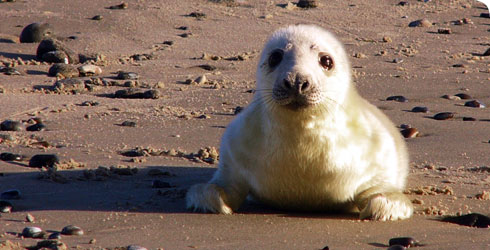Halichoerus grypus (grey seal)
There are 2 subspecies of grey seal - Halichoerus grypus grypus and Halichoerus grypus macrorhynchus.They live in the north Atlantic and Baltic seas respectively.
The grey seal lives in coastal waters, where it dives for food and comes ashore onto ‘haul out sites’ to rest, mate and give birth.
Female seals feed their young for only 3 weeks, but their milk is rich in fat. In this short time, the seal pup can quadruple in size.
In some parts of the world, grey seal numbers are increasing. This is because one of its major predators, an Atlantic shark species, is over-exploited by humans. But the seal still faces threats from hunters, pollutants and viruses.
Species detail
-

Taxonomy
Discover how adult and juvenile grey seals vary in colour, and how the 2 known subspecies of grey seal differ.
-

Distribution
Grey seals live in cold-temperate coastal regions on both sides of the north-Atlantic, and some populations are expanding. Find out how human over-exploitation of a grey seal predator is benefiting this species.
-

Biology
Adult grey seals can grow to more than 2 metres long and live for over 20 years. Find out more about their breeding patterns and discover how seal pups quadruple in size in just 3 weeks.
-

Behaviour
Grey seals are coastal animals and live in large groups. They feed on fish, sand-eels and sometimes eat seabirds. They can dive up to 300 metres deep, but they come ashore to rest, breed and moult. Find out more about this seal’s way of life.
-

Conservation
Grey seals are not currently threatened and are a protected species, although controlled hunting continues. Find out more about the other threats they face.
-
References
Get reference material for Halichoerus grypus.
Images
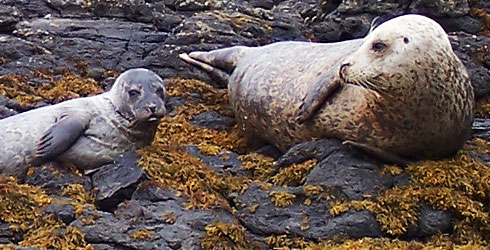
Grey seals and pup on the Isle of Skye.
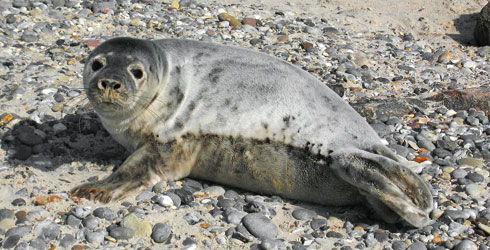
Grey seal.
© Andreas Trepte, Creative Commons Attribution-Share Alike 2.5 Generic license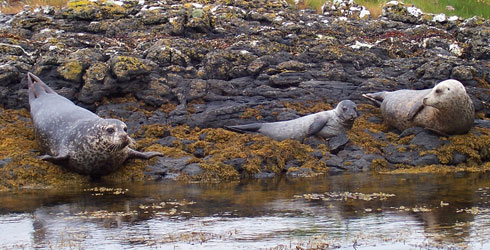
Grey seals and pup on the Isle of Skye.
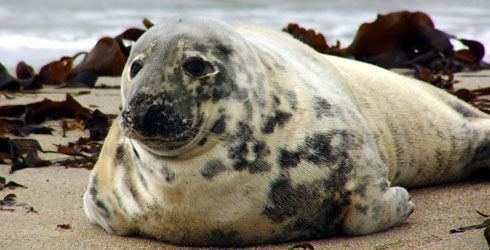
Female grey seal.
© Andreas Trepte, Creative Commons Attribution-Share Alike 2.5 Generic license